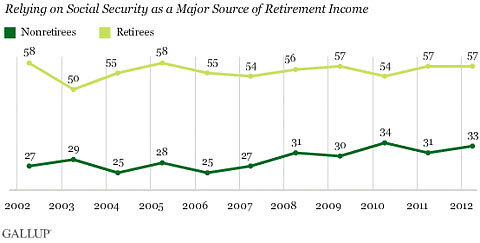By James Kwak
Public pension funds are having a tough time. On the one hand, the average funding ratio (assets as a percentage of the present value of future obligations) is below 80% because of inadequate contributions by sponsors (states and municipalities) and poor investment returns since the collapse of the technology bubble in 2000. On the other hand, because pensions responded to low returns by shifting more of their money into hedge funds and private equity funds, a larger proportion of their assets is siphoned off as investment fees each year.
Unlike some people, I am not against hedge funds and private equity funds in principle. I think it’s highly likely that there are people who can beat the market on a sustained basis—particularly if they are people who are especially good with computers—both for theoretical reasons (someone has to be the first person to discover each relevant piece of information or actionable pattern) and empirical reasons (see Fama and French 2010, for example). Hedge funds have lagged the stock market in recent years, but what critics sometimes overlook is that they are supposed to trail the market in boom periods, because many target a beta of around 0.5. But I am mystified by the fact that, in what is supposed to be a highly competitive and innovative industry, the price of investing in a hedge fund has stayed virtually fixed at 2-and-20 (2% of assets, plus 20% of investment returns) for decades.
The consequences of these high prices are added up in The Big Squeeze, a new report sponsored by the American Federation of Teachers. Because true investment fees are usually not disclosed—fund managers insist that they are confidential and require investors not to divulge them—the report simply quantifies the potential savings from reducing fees from 1.8-and-18 to 0.9-and-9. This may seem arbitrary, but I know anecdotally that some funds, even big ones, are charging something like 1-and-10 even to ordinary investors. Since state pension funds are some of the biggest investors that exist, you would think they would be able to negotiate even lower fees.
Not surprisingly, the numbers involved add up quickly. Lower fees over the past five years would have saved the average pension fund included in the study $1.6 billion; to put things in perspective, it would have improved the aggregate funding ratio for these funds by more than two percentage points, which is nothing to sneeze at.
The important question is why high fees persist despite the potential market power of big pension funds. There are probably multiple explanations. One is a culture of secrecy, which makes it difficult for any fund to find out what other funds are paying. Another is the marketing prowess of fund managers, who are adept at explaining when their fund is unlike any other in the world and therefore merits its high fees. A third is that pension fund managers are playing with other people’s money (in this case, the other people are the fund’s beneficiaries—teachers, firefighters, and other government employees)—and may be more interested in ingratiating themselves with the asset management industry than with getting the best deal they can. (This is even more likely the case for the investment consultants who match pension funds with asset managers.) But in a political climate that makes tax increases on rich fund managers unlikely, state governments could achieve the same results by taking a harder line on investment management fees: requiring public disclosure of all fees or even imposing hard fee caps for pension fund investments. With the amount of money involved, it’s hard to imagine that major pension funds couldn’t find anyone competent to take their money for 0.9-and-9.

